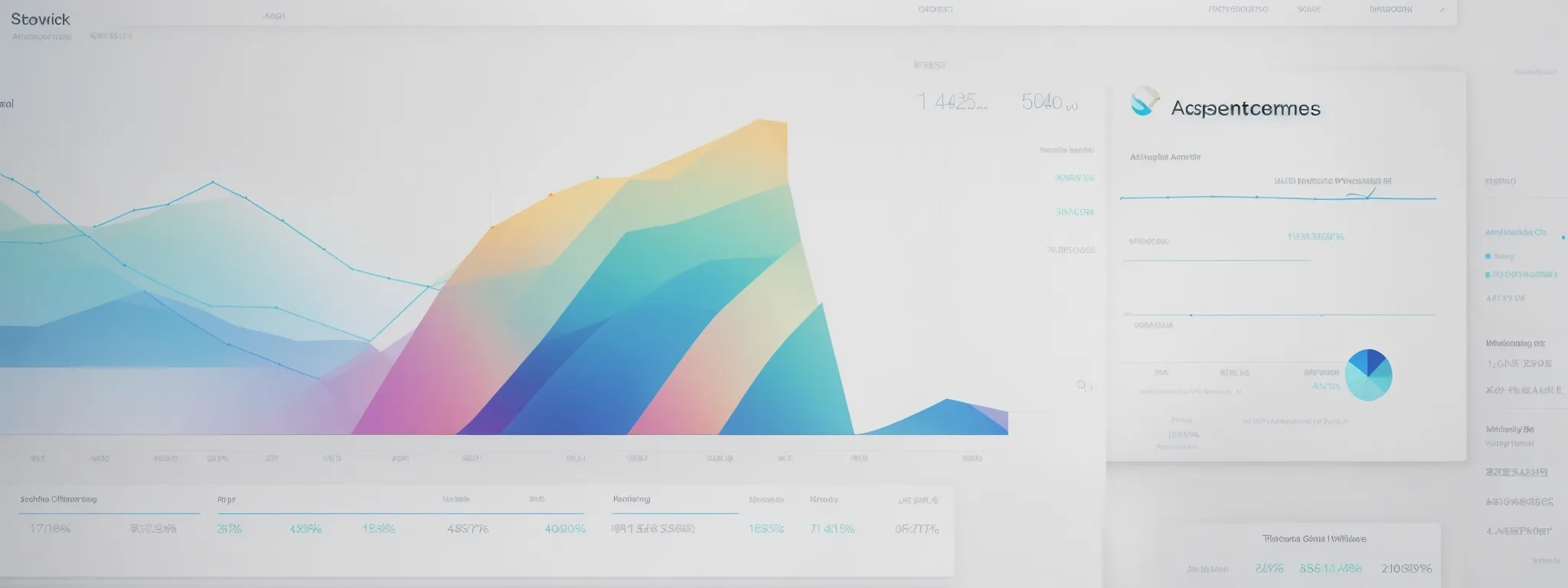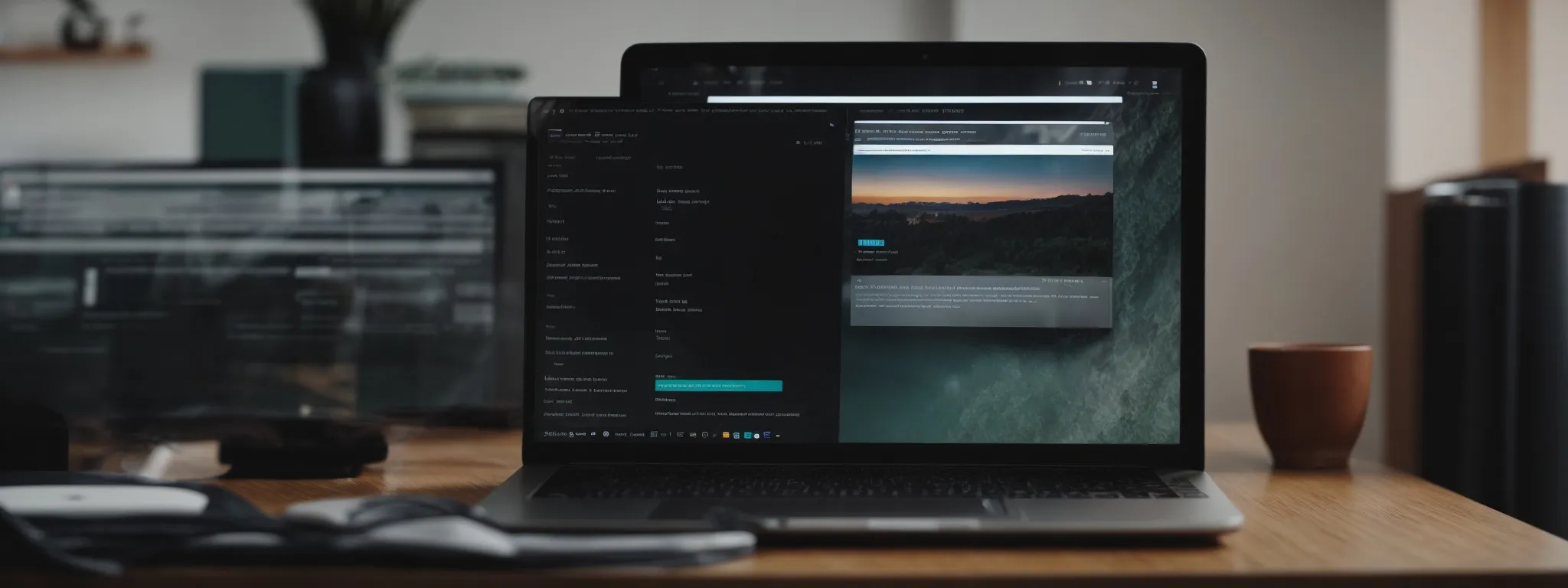Linking Strategies: SEO FAQ Answers
Unveiling the Secrets of Linking Strategies: Your SEO FAQs Answered Venturing into the labyrinth of search engine optimization can be daunting, yet grasping the intricacies of link […]
Unveiling the Secrets of Linking Strategies: Your SEO FAQs Answered
Venturing into the labyrinth of search engine optimization can be daunting, yet grasping the intricacies of link building is pivotal for online ascendancy.
In the realm of SEO, the nuanced application of internal and external links can dramatically sway the search rankings and visibility of a website.
LinkGraph’s SEO services excel not just in simplifying but also in mastering these strategies for a diverse clientele.
With backlinks serving as the lifeblood of site authority and anchor texts guiding the pulse of relevance, understanding their strategic use is a potent tool in any SEO arsenal.
Keep reading to unearth the robust methodologies behind effective link building and how they can transform your online presence.
Key Takeaways
- Internal and External Linking Strategies Are Fundamental for Improving a Site’s Prominence on Search Results Pages
- LinkGraph’s SEO Services Emphasize the Importance of Acquiring High-Quality, Authoritative Backlinks to Enhance Visibility and Search Rankings
- Strategically Crafted Anchor Text Is Critical for Optimizing SEO Efficacy and Guiding Search Engines Towards Content Relevance
- A Diverse Link Profile, Fostered by Techniques Such as Strategic Guest Posting and Local SEO Services, Is Favored by Search Engine Algorithms
- Managing Link Velocity Is Vital for Sustaining Natural Growth in Backlinks and Avoiding Search Engine Penalties
Demystifying Internal and External Link Uses

Mastering the subtle art of link management stands as a fundamental aspect of any robust Search Engine Optimization strategy.
Within this domain, comprehending the nature and strategic application of both internal and external hyperlinks proves indispensable for those aspiring to ascend in the search rankings.
Whether it’s fortifying a site’s navigation with internal links or cultivating authoritative backlinks from esteemed news sites, striking a harmonious balance between these linking elements can significantly influence web presence.
This section aims to elucidate the distinct functions internal and external links serve, while guiding readers on optimizing their symbiotic relationship to propel their site’s prominence on the search results page.
Clarifying What Internal Links Mean for Your Site
Internal links, the conduits within a website, are not merely functional elements for navigation; they are potent tools in an SEO content strategy, which can drive a user efficiently through a web page’s journey. When employed with precision, these site links not only enhance user experience but also serve as indicators to search engines, revealing the hierarchy and the spread of valuable content across a domain.
In the realm of SEO, internal links warrant more than a mere presence—they demand strategic placement and relevance. By linking to resource pages, FAQ sections, or pivotal product pages, a company not only retains visitors longer, thus reducing bounce rates, but also distributes ‘link juice’—the value passed from one page to another, which can bolster a page’s authority in the eyes of a search engine.
Evaluating the Impact of External Links on SEO
External links are instrumental to expanding a site’s link authority, as they essentially function as endorsements in the intricate world of search engine algorithms. When high-quality, reputable sources hyperlink to a webmaster’s content, it signals to search engines that the content is both valuable and credible, which can lead to improved search rankings.
However, building a robust link profile requires more than just any links; it necessitates that the backlinks are relevant and originate from sources with substantial link equity. Through meticulous link building campaigns, site owners can leverage these SEO link building efforts to enhance their visibility in Google search results and attract a more targeted audience.
Balancing Internal and External Links for Better Ranking
To elevate a website’s stature on the search results page, one must master the fine equilibrium between internal and external linking strategies. LinkGraph’s SEO services excel in designing a cohesive framework that seamlessly integrates internal hyperlinking that disperses page authority throughout a site, with acquiring external backlinks that serve as stamps of approval from other domain authorities.
Strategic deployment of the SearchAtlas SEO tool empowers clients to craft link building strategies that not only appeal to search algorithms but also resonate with human visitors. This thoughtful approach ensures a synergy between internal pathways that enhance user experience and external connections that affirm a site’s relevance and expertise.
Understanding the Power of Backlinks in SEO

In the competitive landscape of Search Engine Optimization, the prowess of a website is often gauged by the strength and quality of its backlink profile.
Embarking on an effective link building campaign is more than amassing an indiscriminate collection of links; it is a disciplined pursuit of relevance and trust.
As such, industry leaders like LinkGraph place a premium on strategies aimed at securing backlinks from sources that not only elevate a brand’s reputation but also fortify its stance within its niche.
This section will cast light on how businesses pivot from a quantitative approach to a focus on high-caliber, prestigious connections that enrich their SEO efforts and set the stage for a transformative ascent in search engine results.
Exploring the Importance of Quality Over Quantity
In the intricate arena of search engine algorithms, the caliber of backlinks can vastly overshadow their volume. LinkGraph’s SEO services emphasize that a handful of high-quality, contextually relevant links from authoritative domains can have a more profound impact on search rankings than a large array of mediocre ones.
Discerning brands recognize that link authenticity and relevance are paramount, understanding that search engines reward those who pursue relationships with credible sources that enhance a user’s journey and align with a site’s content strategy. Meticulously curated backlinks, therefore, serve as the cornerstone of an influential online presence that captivates both users and search engine indices alike.
Strategies for Acquiring Backlinks From Reputable Sources
Strategies for acquiring backlinks from reputable sources revolve around the establishment of meaningful relationships and the creation of exemplary content. At the core of LinkGraph’s SEO services is the facilitation of connections with authoritative figures in various industries, accomplished through targeted outreach and the presentation of content that adds tangible value.
For instance, LinkGraph’s guest posting services involve publishing compelling articles on respected platforms, thereby securing backlinks that bear the hallmark of quality. This white label link building strategy not only amplifies a brand’s visibility but also aligns with the ethos of producing content that resonates with a discerning audience:
| Strategy Component | Description | SEO Benefit |
|---|---|---|
| Targeted Outreach | Initiating conversations with industry influencers and webmasters | Builds relevant and authoritative links |
| High-Quality Content Creation | Developing articles, infographics, and resources that provide value | Attracts organic backlinks and engages users |
| Guest Posting Services | Contributing to well-established blogs and news sites | Secures trustworthy endorsements and improves link profile |
Additionally, LinkGraph’s SEO services encompass strategies like the incorporation of an intelligent free backlink analysis, which enables brands to identify potential link building opportunities and benchmark against competitors for strategic insights.

In the intricate dance of Search Engine Optimization, the steps taken in link building can lead to a graceful ascendancy or a misstep that mars a site’s reputation.
As professionals explore the vast tableau of SEO, questions often arise about the efficacy of various link acquisition strategies.
Skirting the line between optimization and penalization requires a meticulous understanding of what constitutes best practices in link building.
This section unveils the pivotal factors to consider when crafting link building strategies, spotlighting the common pitfalls that can derail efforts and the ethical practices that underline successful link acquisition.
Identifying Common Link Building Mistakes to Avoid
In the realm of SEO link building, one common misstep is the pursuit of quantity over quality. Companies that rush to amass a high volume of links without scrutinizing the relevance and authority of the linking domains can inadvertently invite penalties from search engines, undermining their SEO efforts.
Another cardinal error in link acquisition is neglecting the diversity of link attributes. Overusing dofollow links or disregarding the natural presence of nofollow links can raise red flags for search engines, prompting scrutiny and diminishing the perceived authenticity of the link profile:
| Link Attribute | Importance | Best Practice |
|---|---|---|
| Dofollow Links | Passes link equity and boosts pagerank | Use judiciously; focus on quality sources |
| Nofollow Links | Signals a natural link profile to search engines | Incorporate organically to avoid over-optimization |
Adopting Best Practices for Ethical Link Acquisition
Embarking on ethical link acquisition necessitates adherence to white-hat SEO principles, and LinkGraph’s SEO services prioritize integrity above all else. Their methodology is rooted in fostering genuine connections and creating content that genuinely merits a link, thus ensuring clients build a sustainable, respectable online presence that search engines reward.
Comprehensive service offerings from LinkGraph, including free SEO audits and white label link building, are designed with compliance to search engine guidelines in mind: ensuring that all tactics employed contribute positively to the site’s standing in the search results, benefiting the brand and its audience alike.
| Best Practice | Approach | LinkGraph’s Services Alignment |
|---|---|---|
| Ethical Outreach | Engaging with potential linking partners through personalized, respectful communication. | Utilizes refined email outreach techniques tuned to industry standards. |
| Content Quality | Producing high-value content that addresses user needs and sparks engagement. | Leverages SEO content strategy and blog writing services to craft authoritative articles and resources. |
| Link Relevancy | Securing backlinks from contextually appropriate sources that augment the content’s value. | Employs SearchAtlas SEO tool for precise backlink analysis and strategy formation. |
How Anchor Text Influences Link Strategy Effectiveness

In the intricate landscape of SEO, the significance of anchor text in link building campaigns cannot be overstated.
Anchoring the connection between two digital locales, the choice of anchor text wields considerable power in signaling to search engines the relevance and topic of the linked content.
Upcoming discussions will delve into the nuances surrounding the various types of anchor text and how judicious crafting of this clickable text can amplify a site’s SEO efficacy.
Through examining the best practices for composing anchor text, professionals can harness its full potential to communicate clear, thematic signals to search engines, ultimately enhancing the effectiveness of their overall linking strategy.
Breaking Down the Types of Anchor Text for SEO
The intricacies of anchor text for search engine optimization are vast, yet they play an indispensable role in reinforcing a site’s link building strategy. At its core, anchor text—the visible, clickable text in a hyperlink—guides search engines in deciphering content relevance, contributing significantly to the user experience and the site’s search engine performance.
Varying anchor text types provide different levels of context and influence for users and search engines alike. Brand-specific anchor text can bolster brand recognition, while keyword-rich variations can improve a web page’s association with certain search terms:
| Type of Anchor Text | Description | Impact on SEO |
|---|---|---|
| Exact-match Anchor Text | Includes a keyword that mirrors the page’s targeted keyword. | Can improve relevancy for specific search queries but should be used sparingly to avoid over-optimization. |
| Generic Anchor Text | Uses non-descriptive terms like ‘click here’ or ‘read more.’ | Offers less SEO value but can enhance user experience by providing clear directives. |
| Branded Anchor Text | Features the brand’s name as the anchor. | Strengthens brand visibility and can contribute to a more natural link profile. |
| Partial-match Anchor Text | Incorporates a variation of the target keyword along with additional text. | Helps maintain keyword relevance while reducing the risk of appearing manipulative to search engines. |
Adept usage of anchor text requires a strategic approach, applying the most suitable type for the context to optimize both search rankings and user navigation. LinkGraph’s SEO services provide expertise in leveraging anchor text’s full capacity within a principled SEO content strategy, ensuring clients can thrive in the ever-evolving digital landscape without incurring search engine penalties.
Crafting the Right Anchor Text for Maximum SEO Benefit
Optimizing anchor text poses a considerable challenge; one must tread carefully to strike a balance that satisfies the algorithmic appetites of search engines and the informational cravings of users. LinkGraph’s SEO services meticulously engineer anchor text to serve as both a guide and a keyword beacon, thereby enhancing the overall link strategy while avoiding the pitfalls of over-optimization that can impede SEO benefits.
Diligence and understanding of context are pivotal in composing anchor text, which has the power to define the relevance of a hyperlink and impact search rankings. The strategic application of varied and appropriate anchor text is a nuanced technique that LinkGraph champions, supporting clients in developing SEO link building strategies that yield discernible results and heighten a site’s authority and user trust.
Mastering the Art of Link Diversity for SEO Success

Navigating the intricate web of SEO requires not just robust link building tactics but also an acute emphasis on the diversity of the links a website garners.
Within the stratagems of search engine algorithms, the variety in links—a plethora manifested in the sources, types, and the domains they come from—plays a crucial role in elevating a site’s relevance and authority.
This section unfolds how a well-rounded link portfolio acts as a linchpin in SEO success, as dynamic link profiles garner favorable algorithmic attention.
Moreover, it offers insight into the techniques that perpetuate the essence of a diverse link profile, which, when implemented, can effectively enhance a website’s standing in the digital realm.
The Role of Link Diversity in Search Engine Algorithms
The tapestry of a website’s backlink profile is monitored closely by search engine algorithms, which favor diversity as a hallmark of organic and authoritative linking practices. Search engines like Google assess not just the quality but also the variety of links, favoring those that are sourced from a multitude of domains and content types, demonstrating the website’s wide-reaching validation and relevance.
LinkGraph’s meticulous approach towards cultivating a diversified link portfolio ensures that a brand’s website is not just a nexus of high-quality backlinks but a repository of links that signify trust and domain authority. This strategy steers clear of repetitive patterns that might suggest artificial link building, instead positioning the website as a credible resource that naturally earns links from a broad spectrum of sources.
Techniques for Ensuring a Diverse Link Profile
Deploying a range of techniques is vital for brands aiming to foster a diverse link profile. LinkGraph’s SEO services underscore the importance of mixing link types, ensuring that each portfolio includes a balance between dofollow and nofollow links, as well as incorporating both inbound links from various high-authority and niche-specific domains.
An artful distribution of backlinks across different content types and web pages within a site enriches the overall SEO strategy:
- Strategic guest posting on various platforms offers backlinks embedded in unique contexts, preventing monotonous patterns.
- Investing in local SEO services places links within regional directories and forums, thereby tapping into geo-specific search relevancy.
- Curating valuable interactions with journalists ensures natural inclusions of links in news sites, widening reach and credibility.
Extending beyond the straightforward exchange of links, LinkGraph’s Comprehensive Approach to white label link building proactively involves client engagement in a variety of digital environments, securing diverse and impactful SEO links that stand up to the scrutiny of search engines and user expectations alike.
Evaluating the Impact of Link Velocity on Site Rankings

The intricacies of SEO are replete with terms that often perplex even seasoned webmasters, with ‘link velocity’ surfacing as a crucial yet commonly misunderstood concept.
This term encompasses the rate at which a website acquires backlinks over a period and its subsequent effects on search rankings.
Integral to a refined SEO strategy, managing link velocity requires a balanced, strategic approach to ensure sustained growth and avoid triggering search engine penalties.
In the pursuit of clearer understanding, upcoming topics will explore the implications of link velocity while delineating best practices for adeptly managing link expansion, honing in on the nuances that can make or break a site’s climb to SEO prominence.
Understanding Link Velocity and Its SEO Implications
Link velocity, a term integral to understanding the ebb and flow of SEO efforts, refers to the pace at which a website gains backlinks. Recognizing its significance, search engines scrutinize link acquisition rates to differentiate organic growth from artificial inflation, with the former being lauded and the latter often penalized.
For webmasters and SEO strategists, a grasp of link velocity carries noteworthy implications. It signals the need for a meticulously calibrated approach to link building, one that fosters steady, natural growth in the number and quality of backlinks: a safeguard against the search engine’s penal measures that can tarnish a website’s standing.
| SEO Element | Role in Link Velocity | Impact on SEO |
|---|---|---|
| Rate of Backlink Acquisition | Gauging the natural pace of link growth over time | Ensures sustainable search rankings and reduces risk of penalties |
| Backlink Quality | Assessing the authoritative weight of each new backlink | Enhances domain trust and search result positioning |
| Backlink Diversity | Monitoring variety in link sources and types | Reflects organic link profile aiding in search engine validation |
Best Practices for Managing Link Growth Over Time
In an age where site rankings fluctuate with the vigor of SEO, adherence to consistent link growth practices stands paramount. LinkGraph’s SEO services counsel brands to eschew erratic spikes in link acquisition, advocating instead for a sustained, authentic expansion that mirrors organic audience growth and content dissemination.
Modern link growth strategies involve a continuous discovery and cultivation of linking opportunities that parallel a site’s content evolution. This approach, embraced by LinkGraph’s seasoned experts, ensures that link building efforts align with content milestones and customer engagement, steadily bolstering a website’s search engine standing without arousing suspicion of manipulative practices.
Conclusion
In conclusion, the successful navigation of SEO linking strategies requires an intricate balance of internal and external links to enhance web presence and climb search rankings.
Internal links fortify site navigation and distribute link authority, while external links from reputable sources act as endorsements to bolster site credibility.
Striking the right harmony between these types can significantly propel a site’s prominence.
Moreover, quality consistently trumps quantity, with a focus on acquiring prestigious backlinks that enrich SEO efforts and elevate a brand’s reputation.
Avoiding common pitfalls, embracing a variety in anchor text, and maintaining a diverse link profile are key to avoiding penalties and ensuring a natural, authoritative backlink landscape.
Additionally, managing link velocity to mirror organic growth is imperative in solidifying long-term search engine trust and achieving sustained SEO success.














































































